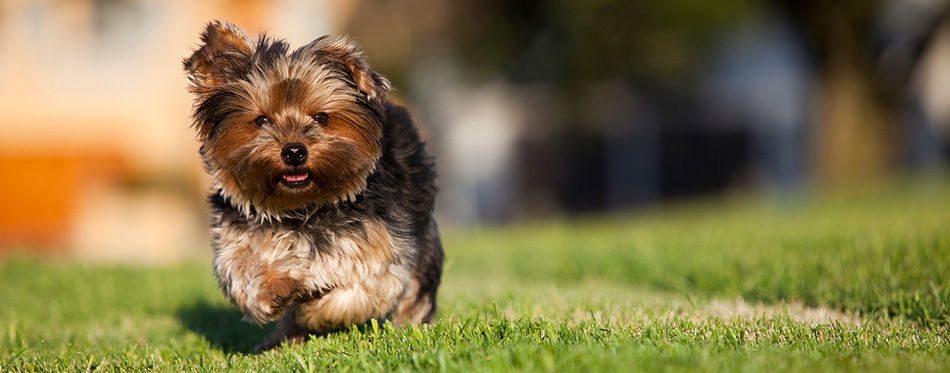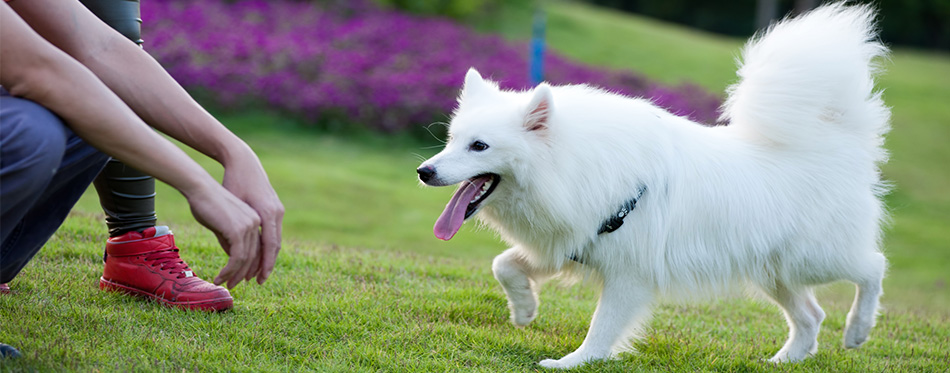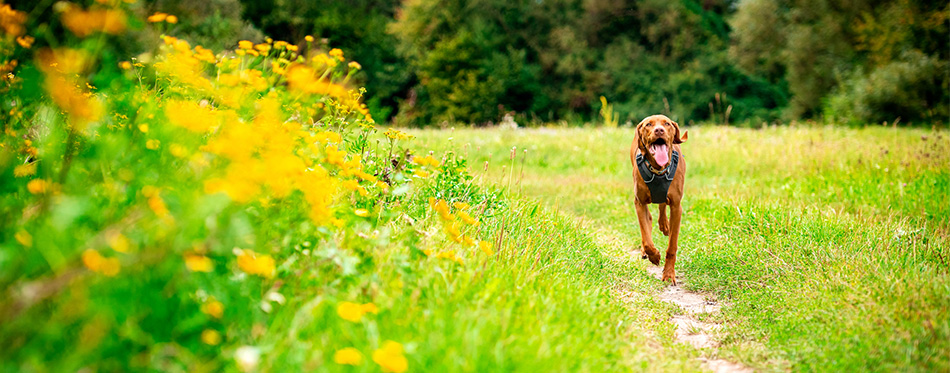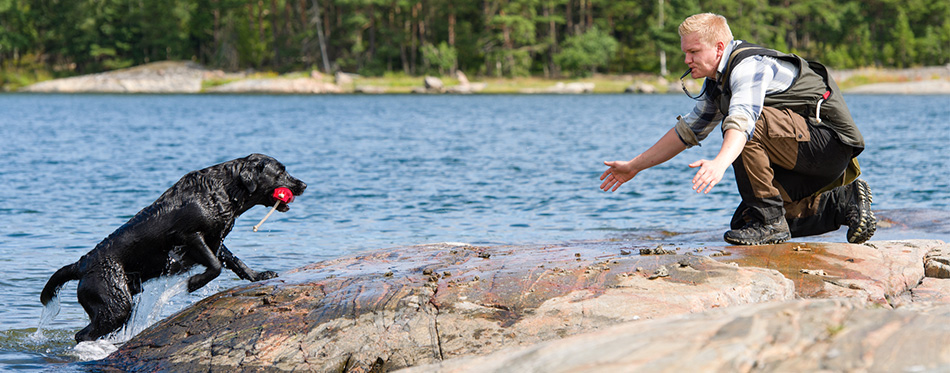Training your dog to “come” is one of the most important milestones your pup will ever reach. Unfortunately, it’s also one of the most frustrating, particularly for those who have a rescue pup, as you’ll need to tackle some hard-to-break habits that your pooch has fallen into. However, no matter where you dog is from or what age they are, it absolutely possible to improve your dog’s recall. All you need is a little time, patience and a few of your canine companions favorite dog treats.

Why Is a Dog’s Recall Important?
There’s a couple of reasons why it’s important to nail you recall, as soon as you’re able. Firstly- and most importantly- is safety aspect. Being able to call your dog away from dangerous situations by overruling their curiosity in place of obedience means there’s less likely to be an accident.
Next, it’s a huge benefit to your dog and others around your dog if you’re able to recall them at a moment’s notice. As you might have already noticed, some people don’t like dogs- and some dogs don’t like dogs either. If you like to walk your dog off their leash, then an easy-going walk can end up in tears, should you come across these types. Instead of dealing with a tirade of abuse- or worse, your pup getting injured- you can simply call your dog back to you and pop them on their leash until they have passed.
Finally, we inevitably try to recall our dog when they’re going to do something that we don’t really want them to do. Whether it’s rolling in poop (yeay!), eating poop (yeay!) or taking a poop on someone else’s property (yeay!), we’re all a little guilty of resorting straight to “come” and sounding a little angry about it. Take a look at our reviews of pooper scoopers for dogs and dog poop bags for more options.
Of course, no dog wants to return to mum or dad- who seems very cross about something- when they could continue doing what they want to do. Thus, you’ll notice your dog suddenly hates returning to you and, eventually, turning tail and running for the hills whenever you use this command.
12 Steps to Improving Your Dog’s Recall
It doesn’t have to be this way and, by following our 12-step process below, you’ll be delighted to know that you can break this bad habit with a little dedication and lots of love. Throughout this process, you’ll need to remember to remain patient- and set your dog up to succeed. Not sure what that means? Read on.
Choose a Command and Ensure Everyone Uses This
It’s confusing enough for puppies to understand a completely different species, using a completely different language, and then connect this with an action that your human would like you to do. In order to make it easier for everyone involved, you’ll need to begin by choosing a word. This can be any word, really, as long as everyone who has contact with your dog knows this word and uses it to mean that single action. The most basic and common word to recall your dog is “come”.
Set Them Up to Succeed
Remember that your puppy is still just a baby and an older dog will already need to break their bad habits. Begin by using small steps- and we mean really small steps. You might find it easier with puppies initially, as they tend to be a little clingier and follow around their masters, naturally. Use this to your advantage and be sure to simply say the word “come” when your puppy follows you around. Don’t forget to give them loads of cuddles and treats (for dogs who aren’t food oriented- yes, it’s rare but it happens- choose a special training toy that you only bring out for these occasions). Eventually, it will click with your pup that the word “come” means to head back to you.
If you’re struggling with getting enough distance between you and your pup in the first place, try to enlist to some help. With one person standing ten paces away, holding on to your pup, only request that they loosen their grip when you have said the command of your choosing.
For older dogs who need to work on their recall, you might find the opposite problems occurs. In this case, you’ll want to be the most exciting thing in the area. Your dog isn’t going to want to sniff that funny-looking tree if they’ve noticed that their human is holding something squeaky. All you’ll need to do here is use your command as soon as they begin making their way back to you. If they stop, because they’ve spotted something shiny, use your command again and show them what you have.

Make It Worth Their While to Come Back
Nobody wants to be around someone who is angry, frustrated or downright negative. That goes for dogs, too. If you’re angry, or shout at your dog when they do what you’ve asked, then they simply won’t come back to you next time. Always, always, always make it worth their while to come back- even if you’re stressed or had to call them back because they’ve been naughty.
The best thing to bring along, based on the majority of dogs, is food. If you always have a stash of treats on you, your dog will quickly learn this and stay nearby when there is promise of a nibble. Don’t forget to keep up with your training, even when you think your dog has nailed it- give them a treat if they return to you while out on a walk or pass them one when in the back yard.
It’s also a good idea to carry around a dog toy that you can use specifically when training. Having this to hand makes you much more fascinating and will reassure them that you aren’t asking them to return, just to be put on a lead, stuck in a car and driven home.
Be Consistent
We’ve already spoken about the need for everyone to use the same command, but it’s important that everyone also responds to the positive behavior in the same way. Once you’ve found what works for your dog, be sure to let everyone involved in your pups life know about the best way to train your dog.
Dogs will also respond to the security that you provide them, and having a consistent tone of voice, command or signal will let them know, instantaneously, what you want and how they can please you. After all, most dogs live to serve the alpha of the pack, so they’ll always try their best to make you happy- it’s what makes them happy!
Keep It Interesting
It sounds a little contradictory but, as well as staying consistent, you’ll need to kick it up a notch once your dog has got their recall down. Bring out a new toy every now and then, try different treats or play some unusual games with them.
Playing hide and seek with your pup is a great way of keeping them mentally and physically stimulated. Simply let your dog ahead a little, or distract them with something, then hide away when they’re not looking. Call them over, using your preferred command, and watch them sniff you out!
You should also remember the key factor: in order to get your dog’s attention over that fascinating smell, playful pup friend or great noise they’d like to discover, you’ll have to be the most interesting thing in the area. Sometimes that requires acting like a bit of a loon, other times it simply means taking out a new treat. Either way, be sure to make a huge deal out of dog obedience.
Everything Is Exciting!
As mentioned, dog’s aren’t going to respond to you unless you’re more interesting than the other thing they wanted to stick their nose into. If you’d like your dog to pay attention to you, you’ll need to be super-excited, super-positive and absolutely sure that you are the best thing since sliced bread. Positive mindset- if you believe it, they’ll believe it.
Old Dogs Can Learn New Tricks… and So Can the Young’uns
As mentioned, there’s no such thing as a “bad dog”- just a dog who doesn’t know the right thing to do at the right time. An older dog has usually come from a rescue center, so you know that they’ve been let down once in their life, already. This can give them some slight trust issues, they may be unsure around new people, or they may simply have not been taught what to do when you try to recall them. Stay consistent and be the best you, that you can possibly be for them- after all, they absolutely deserve it.
Puppies, on the other hand, may follow you around endlessly in the beginning. Use this instinct to build a solid foundation for future training. No pup is too young to learn and all they’ll need is a little guidance. Again, if you keep yourself the most interesting thing in the area, you shouldn’t suffer too badly with your pup’s short attention span!

Give Your Dog Some Choices
When learning any new command, it’s important not to force your dog to do your bidding. If you grab your dog by their collar while saying “come”, they will instantly associate that command with the feeling of being restricted. Essentially, they need to choose to return to you. It’s OK for your dog to wander off a little or even to deliberately misbehave, at first. Simply up the ante and look to make yourself more interesting. It can absolutely be frustrating but hang in there- they WILL get it. For more options head over to our guide on dog collars.
Don’t Let Yourself Become Repetitive
Dog’s thrive in new environments and by learning new tricks. They love to have a little variety and you can be the main source of that. If you’ve noticed that your pooch has become a little bored of all the same old games and treats, it’s time to bring out the big guns- the games.
Chase games are a great way to encourage your dog to follow you. If they aren’t listening to your command, simply turn on your heel and run. Your dog will immediately begin to chase after you- after all, they want to know if you’ve found something interesting, are hiding something from them or are running toward/away from something. Once your dog has caught up, give them loads of praise and reinforce their behavior by repeating your command along with “good girl/boy”.
Allow Others to Get Involved
Inevitably, your dog won’t be spending every second of every day with you- if you’re at a wedding or out of town, you may need someone to take care of your dog for you. If this happens, then they’ll need walks and love, of course. That said, if your dog has only ever responded to you and only ever knows only you, then it is extremely unlikely that any dog would respond to anyone else.
Proper socialization is key to successfully raising a happy dog. So, get everyone involved! Allow your dog to spend time with family and friends, training them the same way you have and giving your dog commands. Eventually, your pup will pick up on the fact they need to respond to their commands, no matter who is giving the command itself.
Never Scold or Punish Your Dog
This is easily the biggest “no-no” of training a dog. No matter how annoyed or frustrated you might be punishing your dog will only ever work by reinforcing the need to be away from you. The only exceptions to this are when you catch your dog in the act- and, even then, you should simply say the word “no” followed by distracting your dog away from the act that is causing you grief.
When we’re dealing with kids, we also often resort to saying things like “if you don’t tidy your room, then I’m not going to draw pictures with you”, for example. This is a great way of teaching them that every action they perform leads to a reaction. With dogs, however, ignoring them, telling them off etc. only leads to confusion. A dog will only ever respond to positive reinforcement- such as telling them how good they’ve been, going to the toilet outside- instead of in the kitchen on a new doormat. In this example, you should focus on the joy they’ve brought by peeing or defecating outdoors- NOT the fact that they’ve urinated on your mat.
The same process works for recall. If your dog is ignoring you, you simply react in a way that inspires them to follow you- such as with the chasing game mentioned above. Once they’ve “caught” you, you can respond with lots of love and happiness. You don’t need to tell them off for ignoring you- they’ve already learnt their lesson that you are more interesting than anything else in the area and they should therefore follow you.

Give Your Dog a Break
It’s fair to say that, just as we humans are when in a meeting, dogs can become bored easily. Sometimes, it’s because they’ve figured out something more interesting to do and, sometimes, it’s because they’ve simply grown mentally exhausted from all the extra effort they’ve spent, learning.
It’s tough to remain actively, mentally engaged on a project that takes up a lot of energy. Especially if you’re a puppy. So, remember to give your dog lots of breaks. You’ll notice if they need a break by their body language- for example, they may not walk away from you, but they’re actively trying to break the contact you’re having so that they can lie down, get a drink or simply go and sniff something else. At this point, they’ve lost interest- and that’s OK, too.
If you spot your dog losing interest in your training, then do something completely different. Go play fetch, run around or simply sit down for a while, with your pup and have a cuddle. Remember, if it begins to feel like a chore, they won’t want to contribute any more.
The training doesn’t stop here!
Dogs will need to continually have this habit renewed, every day for the rest of their lives. It might sound heavy going but remember that a lot of this work will be happening in your day-to-day life, on walks or around the house, so don’t get too stressed.
Just remember to always follow these steps, particularly when it comes to being interesting, making it rewarding for your dog to return and keeping the command itself fresh in their minds. Most importantly, remember that, once you’ve set the standard, you have to be sure to stick to it!

